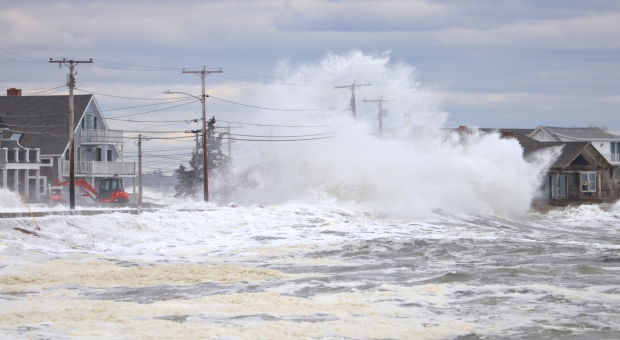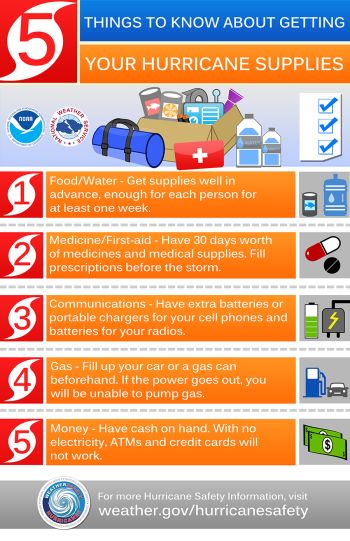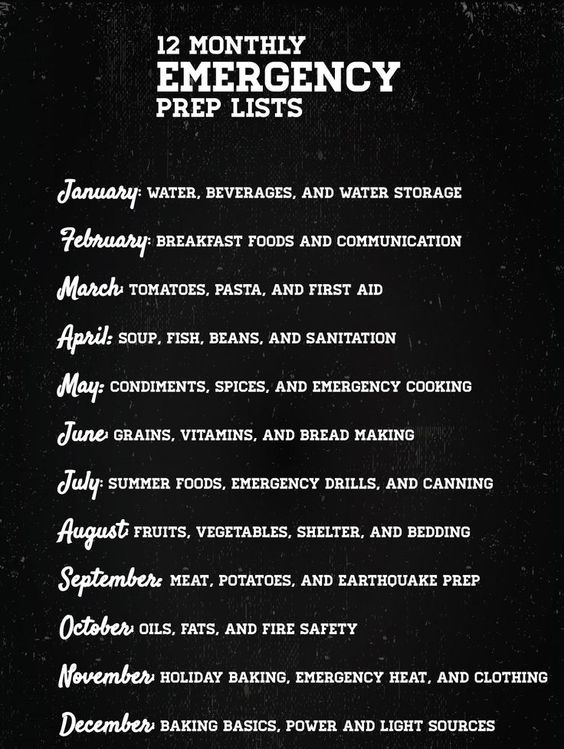Close to seven hurricanes hit the United States every four years, and three major hurricanes every five years.
Hurricanes are a major threat to life and property. They are the most damaging natural disasters, having killed thousands of lives and homes for the past 30 years.
This Device Easily Turns Air Into Water!
There are 1.2 million Americans living in coastal shoreline counties who are at risk of substantial damage from hurricanes. Hurricane damage costs the government $28 billion a year. According to statistics, this will reach $39 billion by 2075.
Hurricane impact
When hurricanes strike, it brings a number of serious hazards, such as heavy rains, storm surge, high winds, and tornadoes. Knowing what to do in situations like these is a must, especially if you live in a hurricane-prone area.
Heavy Rains
Heavy rains cause flooding. It is more advisable to stay indoors when there’s an impending storm. Tropical storms or hurricanes have the ability to produce heavy rainfall, which can almost lead to serious flooding or flash flooding. The following are the safety precautions against heavy rains:
- Do not drive through a flooded area. According to statistics, more people drown in cars than elsewhere. Additionally, avoid driving around road barriers. The bridge or road may be washed out. Stay away from power lines and electrical wires.
- Evaluate the risk of flooding in your home. The FEMA’s website gives you information about the likelihood of flooding in your region.
- If your home is not built to withstand rising water, consider doing some flood-proofing work, such as raising your home on stilts or piers, installing foundation vents or sump pump, applying coatings and sealants, pointing downspouts away from your home, grading your lawn away from your house, keeping a space between your mulch and siding.
Storm Surge
Storm surge is the normal rising of seawater level during a storm which is primarily caused by strong winds pushing water onshore. The amplitude of storm surge depends on several factors, such as the intensity, size, and speed of the storm. Even if your house is far from the coastline, if you live in a flood-prone area, you are likely to be affected by a storm surge. Additionally, it is important to be financially prepared as hurricanes can leave costly damage in your home. Having emergency savings is a must. Nonetheless, hurricane victims can also obtain emergency personal loans, along with government assistance.
To prepare for a storm surge, consider the following steps:
- Stock on sandbags. They are a great tool for preventing water from entering your home.
- Turn off the gas and electricity in your home.
- Prepare an emergency kit/bag which should include food, medical supplies, identification cards, important documents, water, flashlight, etc.
- Plan for evacuation. When you have to leave your home, keep your emergency kit close at hand.
High Winds
Hurricanes always come with high winds that can spell danger. Postpone outdoor activities when there is a hurricane forecast or if a high wind warning has been issued.
- If you are outdoors, take shelter in a builder or under a shed. Stay away from roadways or train tracks. High winds might blow you into the direction of an oncoming vehicle. When walking outdoors, especially in elevated areas, use handrails.
- Watch for flying debris. Objects like tree limbs, road signs, and other items may become loose with strong wind gusts.
- If driving, keep both hands on the wheel. Do not speed up. Watch out for flying objects. Don’t drive too close to other vehicles in adjacent lanes because the strong wind can push a car outside of its lane, leading to a serious vehicular accident.
- If the winds are too strong to prevent safe driving, pull over to the side of the road, away from trees and other tall objects that could fall onto your car.
- Secure your home. Before the onset of a storm, clear your lawn or backyard from dead trees or overhanging branches and repair any loose roofing materials. Tune in to local weather forecasts issued by the local authorities, such as the National Weather Service.
Tornadoes
Tornadoes are deadly. They can destroy homes, buildings, and other man-made structures, uproot trees, and hurl objects in the air. Each year, 1,000 tornadoes hit the country. Follow these tips to protect yourself and your loved ones from tornadoes:
- Identify a safe place in your home where you and your family and pets can stay during a tornado. Safest options could be your basement, a room on the lowest floor with no windows, or a storm cellar.
- If you’re in a high-rise building, stay in the hallway in the center of the building.
- If you’re in a mobile home, choose a safe place near a sturdy building. Take note, however, that no mobile home is safe in a tornado.
How global warming affects hurricane intensity
It is still uncertain whether global warming that is globally experienced today will lead to an increase in the number of hurricanes. However, experts agree that the warmer temperatures of the ocean, along with higher sea levels that are brought about by global warming, can intensify the impact of hurricanes.
Warmer sea surface temperatures
Warmer ocean temperatures can intensify the speed of hurricane winds, increasing the risk of damage when they make landfall. The rainfall rates also rise by up to 20 percent due to increased precipitation.
The rise in sea level
In 2012, the high sea levels experienced during Hurricane Sandy caused $65 billion worth of damage in several states, such as New Jersey, New York, and Connecticut. The rise in sea levels can increase the intensity of coastal storms and hurricanes, making them more damaging. Sea levels will rise by 1-4 feet during the next century, according to a 2014 synthesis report on climate change.
How to stay safe before, during & after a hurricane
You can’t get away with hurricanes. When they strike, they strike harder. Even if you live in a region where hurricanes are less likely to happen, with global warming and climate change, natural calamities can occur anywhere, anytime. The only way to increase your chance of survival is to be informed.
Before the Hurricane
If you live in a coastal area, make sure to have an evacuation plan which basically includes a safe shelter to go and the route to get there. Agree on a common meeting place where you and your family can meet in case you get separated from each other.
Always tune in to weather forecasts and follow the advice of local authorities. If they ask you to evacuate, don’t think twice.
Stock up on emergency supplies. A basic emergency kit should contain the following essentials:
- Water – one gallon of water per person per day to last for three days
- Non-perishable food to last for three days
- FlashlightBatteries for your flashlight, radio, and other important devices
- Whistle to signal for help
- First aid kit
- Cell phones with charger and power bank or backup batteries
- Clothes
Do not forget to secure your important documents, a list of emergency phone numbers, road maps, and a full tank of gasoline.
Lastly, secure your home. Make sure your windows are protected with hurricane shutters, tie down or move outdoor furniture, equipment, décor, and supplies inside your home, along with other items that can be blown away by strong winds.
During the Hurricane
As the storm hits your region, your number one concern is your safety and the safety of your family. Keep tuned in to the news and weather forecasts. Find a safe area in your home and stay away from the glass doors, windows, and skylights. If there’s flooding, turn off the main switch of the electricity in your home. If you lose power, turn off major appliances to prevent damage. When there’s lightning, do not use electrical devices, including your phone and computer.
Do not go outside. Even if the surroundings may feel calm. During a hurricane, the wind speed can rapidly increase and flying objects are very likely.
If you’re outdoors when the hurricane starts, get inside the most secure building and stay away from windows.
After the Hurricane
Did you know that more deaths and injuries occur in the aftermath of a storm than during its outbreak? Before going outdoors to check the impact of the storm in your home, neighborhood, or community, there are important safety precautions that you should be aware of.
First of all, remain indoors until authorities have given a signal that it’s okay to go outside.
When inspecting your home exterior, avoid stepping in puddles with wires in or near them. Do not touch or stay close to low-hanging wires and other electrical stuff. Call police or emergency hotlines if you discovered electrical hazards and other life-threatening situations.
If you evacuated and your home was flooded, do not enter until emergency professionals or local authorities say so. Additionally, wear the right gear and clothing to protect yourself from water damage hazards.
Staying safe when there are natural calamities such as hurricanes, requires advanced planning, knowledge, and skills. Hopefully, this guide will make you more confident to protect your family and property against the devastating effects of hurricanes.













































































Author Jim Hughes forgot 2 enormously important things. #1 Bring in from your lawn, windowsills, balconies, ALL furniture, planters, etc. because they can come crashing through your windows and walls and at worst kill you, someone outside, or at least cause avoidable injuries and property damage. #2 Buy an emergency radio which can be powered in any of 3 ways: (1) solar power; (2) hand crank; (3) batter with which you can listen to the NOAA weather reports and 24-hour news station.